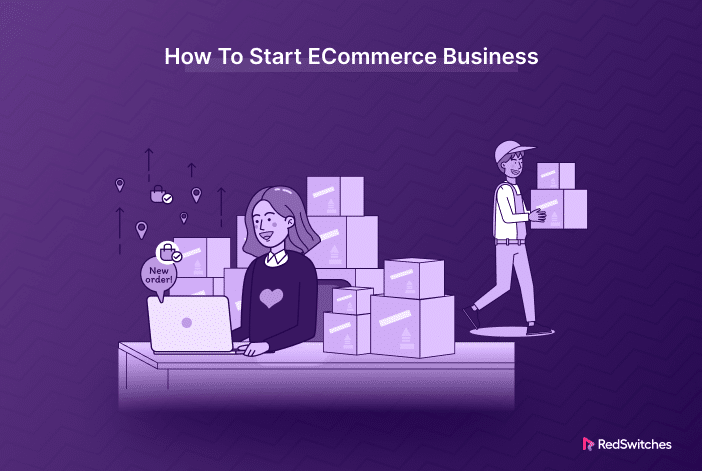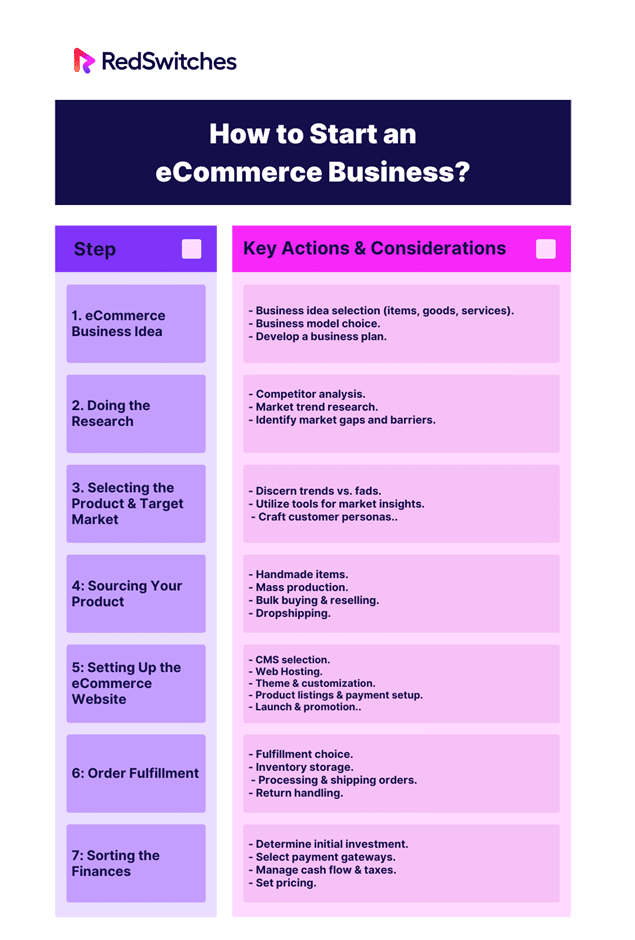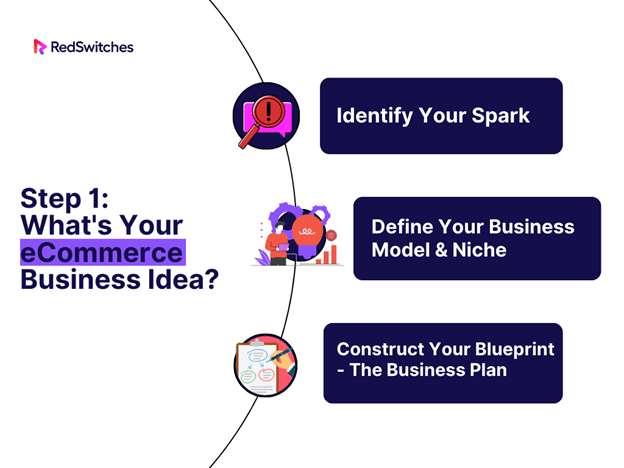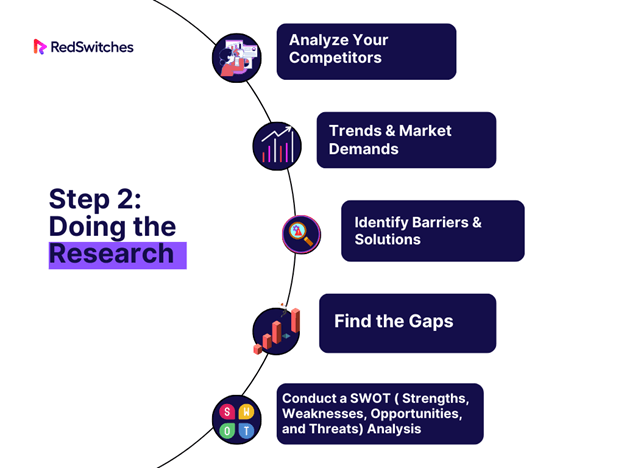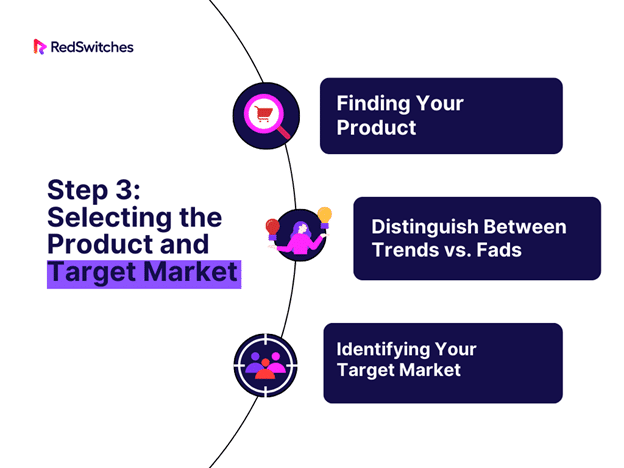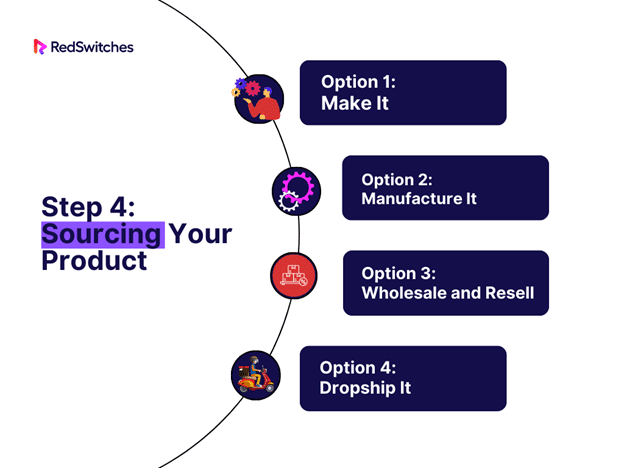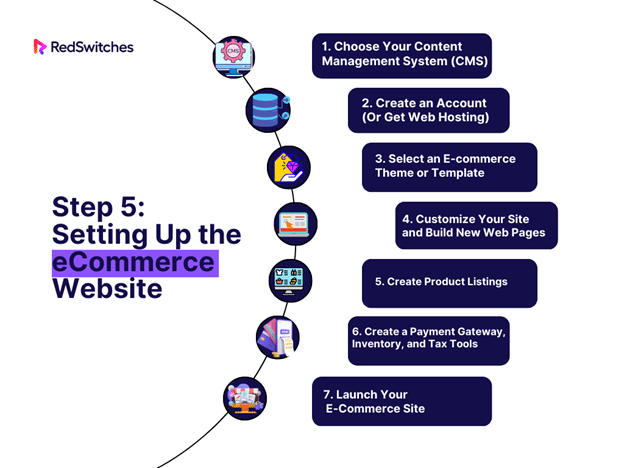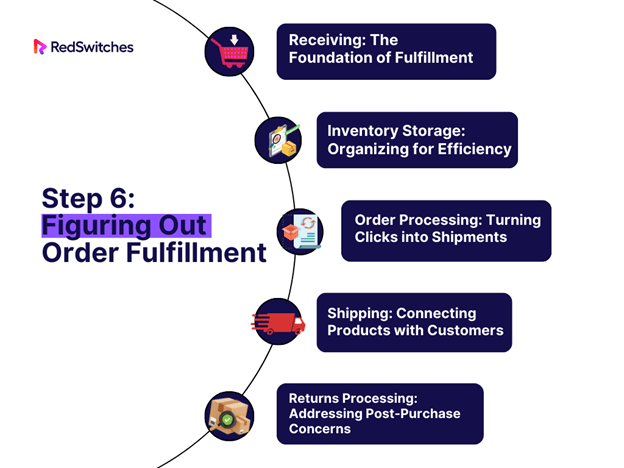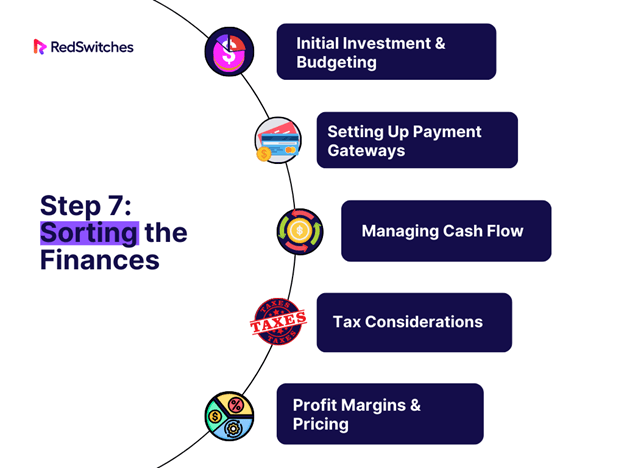In a bustling world where every moment is synonymous with progress and innovation, how we buy and sell has witnessed a profound transformation. Once, market squares and high streets dominated the retail landscape. Today, however, the horizon is studded with digital storefronts, beckoning with the allure of convenience and a global reach. It’s no longer just about walking into a store; it’s about tapping into a universe of choices from the comfort of our homes.
As we draw closer to the end of the year 2023, the seismic shifts in the retail industry are more palpable than ever. A mere glance at the statistics shows the inevitable trajectory of change. By 2026, a staggering 24% of retail purchases will occur online. That’s nearly a quarter of all buying decisions originating from a click rather than a physical trip to a store. This isn’t merely a shift; it’s a revolution.
Let’s embark on this journey together, navigating the answer to how to start an e-commerce business and unlocking the secrets to creating a digital empire.
Table of Contents
- An Overview of eCommerce Businesses in 2023
- What is an eCommerce Business?
- Common Examples of Trending eCommerce Businesses in 2023
- How to Start an eCommerce Business?
- Practical Tips for Starting an eCommerce Business
- Conclusion
- FAQs
An Overview of eCommerce Businesses in 2023
As the gears of the 21st century continue to turn, the eCommerce landscape has dramatically evolved, leaving everyone wondering how to start an ecommerce business. The year 2023 stands as a testament to the flourishing momentum of the online marketplace, with its undercurrents reflecting global economic, technological, and consumer behavioral shifts.
What is an eCommerce Business?
eCommerce (electronic commerce) business refers to the buying and selling of goods or services using the internet, as well as the transfer of money and data to execute these transactions. An eCommerce business operates online, utilizing platforms, websites, apps, or other digital channels to reach its customers.
The Essence of eCommerce
Many new entrepreneurs often wonder how to start an e-commerce business? At its core, an eCommerce business involves buying and selling products or services using an online database. It’s like your favorite downtown store, but you click into it from your device instead of walking in. Whether you’re purchasing the latest bestseller, a handcrafted coffee mug, or even booking a service, if it’s online, it’s eCommerce.
Credit: Unsplash
By the Numbers: A Glimpse into the Market
But why is everyone searching for how to start an e-commerce business? Let’s take a look at the facts. The U.S. e-commerce market, a leader in the global digital commerce sphere, is poised to achieve a mind-boggling $1.1 trillion in sales in 2023. To further delve into these numbers, another projection puts the U.S. eCommerce market’s reach at over $940.9 billion in 2023.
While this is an astonishing figure that showcases the American digital prowess, it’s intriguing to note that this is only a bit over a third of China’s total, highlighting the vast global expanse and potential of the eCommerce arena.
Common Examples of Trending eCommerce Businesses in 2023
In the ever-evolving realm of eCommerce, certain businesses have taken center stage, capturing the imaginations and wallets of consumers worldwide. These businesses aren’t just capitalizing on fleeting trends but reflect more profound societal shifts, preferences, and innovations. Let’s delve into the captivating world of the most trending eCommerce businesses, human stories entwined with technological marvels.
1. Warby Parker
In the sprawling universe of eCommerce, where countless brands are vying for consumer attention, specific stories stand out for their commercial success and their ethos, vision, and ability to resonate. Warby Parker, the innovative eyewear brand, is one such shining star. Let’s look at how this company transformed the eyewear industry, one frame at a time.
Lessons from Warby Parker’s Journey:
Value Proposition and Incentives:
- Not just affordable prices but also direct sourcing for savings.
- Offers free shipping, at-home try-ons, and generous returns.
Storytelling as a Tool:
- Warby Parker emphasizes narrative over mere selling.
- Uses humor, values, and testimonials to enhance content.
- Their unique approach boosts organic brand discussions.
Prioritizing User Experience:
- The seamless online experience is central to their strategy.
- Features include intuitive navigation and easy checkout.
2. Dollar Shave Club:
In a world teeming with brands and products, it’s rare for a startup to redefine a category and achieve a billion-dollar exit in less than five years. Yet, that’s precisely what Dollar Shave Club did, turning the grooming industry on its head. So, how did a brand selling bulk-purchased razors from China become an eCommerce legend? Let’s dive in.
Lessons from Dollar Shave Club’s Journey:
Convenience as the Real Product:
- Moved beyond just selling razors.
- Used a $1 subscription model for hassle-free grooming.
Authentic and Humorous Storytelling:
- Veered away from typical sales pitches.
- The viral video led to 12,000 orders in two days.
Masterful Use of Digital Platforms:
- More than just viral content; consistent engagement.
- Focused on community-building and brand loyalty via social media.
3. Bonobos
The eCommerce landscape is rife with titans, making it daunting for newcomers to stake a claim. Yet, Bonobos, a men’s clothing brand, has not only managed to claim a slice of this pie but has also become a beacon for how to build a thriving eCommerce brand. What made Bonobos stand out amid the shadows of giants like Amazon and eBay? Let’s embark on their sartorial journey.
Lessons from Bonobos’s Journey:
Monomaniacal Focus:
- Started with men’s pants, emphasizing superior fit and aesthetics to stand out.
Customer Centricity:
- Prioritized and understood customer needs, leading to a loyal customer base.
- Exceptional Customer Service:
- Notable for multi-channel support and prompt deliveries, including same-day options.
Premium Quality:
- Offerings combine style and comfort with tailored options appealing to a dedicated clientele.
How to Start an eCommerce Business?
The dawn of the 21st century brought technological innovations, ushering in an era where traditional commerce started its transformative journey into the virtual realm. Today, this evolution is more palpable than ever.
This isn’t just a number for aspiring digital entrepreneurs—it’s an invitation. But how does one transition from aspiration to operation within this vast e-commerce universe? As we delve into the intricacies of how to start an e-commerce business, we aim to illuminate the path for those ready to embark on this exciting journey.
Here are seven steps to follow if you want to start a remarkable and successful eCommerce business.
Step 1: What’s Your eCommerce Business Idea?
Starting an eCommerce business is an exhilarating journey, filled with potential and pitfalls. Your first order of business? A clear and compelling idea. Here’s a breakdown of how to start eCommerce business:
Identify Your Spark
Every venture starts with an idea. What’s yours?
- Consider selling physical items like clothing or digital goods like eBooks. Perhaps even professional services.
- Ensure your idea aligns with your passion and market demand.
Define Your Business Model & Niche
- Choose how you’ll do business: holding inventory, dropshipping, a subscription model, or traditional sales.
- It’s not just about a product but a market segment. Who is your target audience? What unique offering can you provide them?
Construct Your Blueprint – The Business Plan
Your roadmap to success highlights the steps to take and challenges to anticipate.
- Delivery Mechanism: How will you get your products or services to your customers?
- Legalities: Do you need specific licenses or permits?
- Finances: Estimate your initial costs. How will you fund your startup?
As you embark on your quest of how to start an e-commerce business, having a detailed and well-thought-out idea isn’t just the starting point—it’s your guiding compass. As you move ahead, remember to keep refining this idea to stay aligned with market demands and personal goals.
Step 2: Doing the Research
Embarking on the journey of starting an eCommerce business is more than just the thrill of setting up an online store. It’s about arming yourself with knowledge, dissecting the market, and finding your unique place. Here’s a systematic approach to your research phase:
Analyze Your Competitors
- Identify the leading players in your niche.
- Study their history, business model, and product offerings. What are they doing exceptionally well? Where are their gaps?
- This will give you an insight not only into what’s working but also into how to differentiate your business.
Trends & Market Demands
- Investigate trending products. Use tools and platforms to understand what consumers are currently craving.
- What are the unmet needs in your industry? Your goal should be to provide solutions uniquely and innovatively.
Identify Barriers & Solutions
- Recognize the challenges you might face entering your niche.
- Will you need e-commerce software, high-quality product images, or advertising campaigns?
- If resources are limited, how can you creatively overcome these challenges? Remember, every giant in the business world started somewhere small.
Find the Gaps
- Before venturing into the vast landscape of eCommerce, understanding the foundational elements like domain and hosting is crucial.
- Pinpointing and bridging these knowledge gaps not only strengthens your online presence but also ensures a smoother entrepreneurial journey.
- Even if you’re entering a saturated market, find ways to serve customers uniquely.
- Differentiation is key in the world of eCommerce.
Conduct a SWOT ( Strengths, Weaknesses, Opportunities, and Threats) Analysis
Strengths & Weaknesses (Internal Factors)
- Company Culture: Does it foster innovation?
- Reputation: What do potential customers think of you?
- Assets: What tangible and intangible assets do you possess?
- Partnerships: Collaborations that can give you a market edge.
Opportunities & Threats (External Factors)
- Regulation: Are there legal considerations to be aware of?
- Supplier Landscape: What does the supply chain look like?
- Competitive Analysis: Who are the leading competitors, and what are they doing?
- Market Dynamics: Understand the market size, trends, and potential shifts.
To navigate the intricate answer to how to start an e-commerce business, research is paramount. It provides clarity, identifies gaps, and paves the roadmap for your venture. By understanding where you stand and where you want to go, you’ll be well-equipped to carve out your niche in the bustling eCommerce landscape.
Step 3: Selecting the Product and Target Market
Diving into the world of eCommerce requires two foundational pillars: your product and your target market. It’s like setting sail without a compass and a keen understanding of both. So, how to start an e-commerce business with a clear vision and direction? Let’s navigate through.
Finding Your Product
- Begin with what you know. Past professional experiences or insights into specific industries can offer a unique edge. It can also provide genuine value to customers.
Distinguish Between Trends vs. Fads
It’s crucial to distinguish between the two.
- Fads: Short-lived surges based on novelty. They might offer temporary profit, but building a business solely on a fad can be precarious.
- Trends: These are more profound shifts in consumer behavior or preferences arising from an existing need but met in a novel way. Trends can offer sustainability in business.
Spotting Trends
- Social Listings: Interact on industry-specific platforms or where potential customers frequent. Track trending hashtags and use tools that highlight social dynamics.
- Search Trends: Google Trends offers insights into products or keywords gaining momentum. It’s a window into current consumer interest.
- E-commerce & Aggregator Websites: Websites like Trend Hunter or niche-specific subreddits can give you a heads-up on evolving trends.
- Customer Reviews: They’re a goldmine of information. Reviews can highlight gaps in current offerings and guide your product development.
- Keyword Research Beyond Google: Platforms like Amazon and eBay are essential research tools. They offer insights into specific search patterns, helping you understand customer intent and expectations.
Identifying Your Target Market
- Picture your ideal customer. These semi-fictional representations guide marketing and product decisions.
Ask Key Questions
- How old are they?
- Where do they reside?
- What’s their income bracket?
- What causes or values resonate with them?
Mapping the Customer Journey
- Based on the persona, deduce their online habits and preferences. This can guide where and how to market your product.
As you establish your eCommerce venture, clearly understanding your product and target audience isn’t just a strategy; it’s a necessity.
Step 4: Sourcing Your Product
Embarking on how to start an eCommerce business isn’t solely about a catchy website or a marketing blitz. It’s fundamentally about the products you’re selling. Where do they originate? How do you guarantee their quality and appeal?
Properly sourcing your product becomes the linchpin for the entire venture. In this section, we’ll demystify the process of product sourcing, ensuring you’re equipped with the knowledge to make informed decisions and align with your brand’s core values.
Option 1: Make It
Crafting with Passion
- The heart and soul of artisans belong to this category.
- If you possess a particular skill or craft, making your products can provide a unique value proposition.
- This method resonates particularly in sectors like handcrafted jewelry, art pieces, organic cosmetics, crafts, and tailored clothing.
Benefits:
- Authenticity: Each product embodies a story, a personal touch that can’t be replicated.
- Control: Ensuring each item meets your quality and design standards.
Challenges:
- Time-Intensive: The creation process of each item demands personal attention and effort.
- Scalability: Maintaining consistency and timely delivery can become challenging as the demand increases.
Option 2: Manufacture It
Mass Production
Mass production involves partnering with a manufacturing facility to create large quantities of your designed items, locally or overseas.
Benefits:
- Consistency: Uniform quality and design can be maintained across all products.
- Economies of Scale: Per-unit costs reduce substantially when items are produced in large batches.
Challenges:
- Initial Capital: A hefty upfront investment is typically required for large-scale manufacturing.
- Inventory Challenges: Storing large quantities necessitates logistics and warehouse solutions.
Steps to Partnering with a Manufacturer:
- Conduct comprehensive research considering local and international options.
- Trade shows can offer valuable networking opportunities with potential manufacturers.
- Communication is vital: Ensure all terms and conditions are crystal clear.
Option 3: Wholesale and Resell
Buy in Bulk, Retail to the Masses
This approach entails purchasing products in substantial quantities at a discount and then marketing and selling them individually or in smaller sets at a profit.
Benefits
- Market-Tested Products: Existing demand can be leveraged since these products already have a market presence.
- Bypass Production: Avoid the complexities and potential pitfalls of the production phase.
Challenges
- Profit Margins: The buy-and-sell model often operates on thinner profit margins.
- Storage Concerns: Handling significant inventory necessitates robust storage and logistics solutions.
Wholesaling Strategies
- Building robust and lasting supplier relationships can lead to favorable terms and rates.
- Monitoring market trends and customer feedback ensures inventory remains relevant and in demand.
Option 4: Dropship It
Retail Without Inventory
The dropshipping model is revolutionary. You only purchase a product from a third-party supplier when you secure a sale, and they handle the rest, from packaging to shipping.
Benefits:
- Minimal Startup Costs: The lack of initial inventory purchase reduces startup costs.
- No Inventory Worries: With no stock to manage, there are no storage or logistics concerns.
Challenges:
- Slimmer Profits: Third-party reliance can often eat into profit margins.
- Dependent Control: Less influence over product quality, stock availability, and delivery times.
Keys to Successful Dropshipping:
- Partner with reputable, reliable suppliers. Their performance directly impacts your brand.
- Diversify suppliers to minimize risk and dependency.
- Regularly refresh and update product listings based on supplier inventory and customer trends.
Step 5: Setting Up the eCommerce Website
Whether you’re a newbie seeking clarity on how to start an e-commerce business or an existing retailer aiming to fortify your online presence, this guide breaks down the essential steps to launch and manage a successful e-commerce platform. Let’s embark on this journey to online selling excellence together!
1. Choose Your Content Management System (CMS)
- Understanding CMS: Every website’s backbone is its CMS, dictating how content is managed and presented.
- WordPress: Highly customizable and globally renowned.
- Shopify: Perfect for those entering the realm of dropshipping.
- Squarespace & Wix: User-friendly platforms ideal for beginners.
- Square Online: Tailored for retailers aiming for both offline and online sales.
- Decision Drivers: Your budget, technical proficiency, and specific eCommerce needs will guide your CMS choice.
2. Create an Account (Or Get Web Hosting)
- WordPress Route: If you pick WordPress, secure a web hosting plan. This offers a domain, SSL certificate, and easy WordPress installation. Level Up Your WordPress Game! Dive into our comprehensive tutorial on WordPress Installation with Docker Compose.
- Website Builders: Just sign up on their website for platforms like Shopify or Wix.
- Domain Registration: If not offered by the CMS, use a dedicated domain registrar. Before diving into the online business world, it’s crucial to understand the basics. Ever wondered about the distinctions between domain and hosting? These fundamentals are essential for anyone looking to start an eCommerce venture. Dive deep into our latest article, “What’s the Main Difference Between Domain and Hosting?“
- Select an E-commerce Theme or Template
- Significance of Themes: They dictate your website’s aesthetic and user experience.
- Availability: All platforms offer a plethora of free and premium templates. Premium options often bring unique designs to the table, minimizing customization efforts.
4. Customize Your Site and Build New Web Pages
- Personalization: Modify your chosen theme to echo your brand.
- Key Actions: Update site headers, footers, navigation, and essential pages, including policies and product showcases.
5. Create Product Listings
- Catalog Creation: Build your product lineup with comprehensive listings.
- Organization: Systematically categorize listings for both customer convenience and efficient management.
6. Create a Payment Gateway, Inventory, and Tax Tools
- Payment Gateway Selection: Tools like Stripe or PayPal enhance security and simplify payment processing.
- Integration Considerations: Security, fees, and ease of integration.
- Shipping: Incorporate shipping options into your platform, defining clear policies.
- Tax Calculator: An optional yet helpful tool for automatic sales tax computation.
7. Launch Your E-Commerce Site
- Rigorous Testing: Ensure all functionalities work seamlessly.
- Mobile Optimization: Confirm site responsiveness across devices and browsers.
- Launch and Promote: Once satisfied, unveil your e-commerce platform. Use social media, influencer marketing, and paid ads for promotion.
With these steps, you’ll be well-prepared to make your mark in e-commerce sales. Remember, post-launch, continually updating and refining your site based on customer feedback and industry trends will keep your venture thriving. But remember the most important part of an online store is security. Want a secure online store? Explore the Six Types of SSL Certificates for Your Website.
Step 6: Figuring Out Order Fulfillment
As you embark on your journey to start an e-commerce business, you must understand that order fulfillment is more than just shipping products. It’s a systematic process involving multiple stages, from receiving products to handling returns. Here’s a concise guide to help you navigate this crucial aspect of e-commerce:
Receiving: The Foundation of Fulfillment
Initial Stocking
Ensure you have enough inventory before diving into online sales. If you’re managing fulfillment internally, stock up in-house. If you partner with a third-party fulfillment provider, supply them with the necessary inventory.
Fulfillment Choice
Whether in-house or outsourced, your approach to fulfillment will dictate the inventory preparation steps.
Inventory Storage: Organizing for Efficiency
Warehousing Basics
Also termed as inventory storage, this is where your products find their dedicated spaces. Properly organized storage ensures product safety and easy retrieval.
SKU-specific Locations
Every unique product or SKU (Stock Keeping Unit) should have its designated spot on a shelf, bin, or pallet, especially in more extensive operations.
Visibility
A well-structured inventory storage system offers a clear snapshot of available stock, preventing overselling and backorders.
Order Processing: Turning Clicks into Shipments
The Two P’s – Picking & Packing:
Once you receive an order, it’s time for product retrieval (picking) and shipment preparation (packing). A packing slip ensures accurate order fulfillment by highlighting the required product quantities and storage locations.
Packaging Essentials:
Your chosen packaging – boxes, bubble mailers, or poly bags – should protect the product and reflect your brand’s aesthetic. Custom packaging and inserts can enhance the unboxing experience for your customers.
Labeling:
Before dispatching, affix the appropriate shipping label on the package.
Shipping: Connecting Products with Customers
Dispatch Methods:
Depending on your business scale and setup, shipping can involve visits to local postal services or scheduled carrier pickups.
Tracking Transparency:
Gather and share the tracking information with your customers upon shipping. This transparency fosters trust and sets clear delivery expectations.
Returns Processing: Addressing Post-Purchase Concerns
Receiving Returns:
Not all sales are final. Prepare a smooth process for returning products. Products are typically sent to the primary fulfillment location for assessment if returned.
Evaluation & Restocking:
Decide whether to restock or discard the item based on your returns policy and the product’s condition. Efficient return processing can boost customer confidence and loyalty.
Step 7: Sorting the Finances
Embarking on your e-commerce journey necessitates a deep dive into the financial waters. As you start your e-commerce business, setting a robust financial foundation is pivotal for sustainability and growth. Here’s a concise guide to ensure your finances are in order:
Initial Investment & Budgeting
- Seed Money: Determine the initial capital required for website setup, inventory, marketing, and other essentials.
- Budget Blueprint: Outline a clear budget, factoring in ongoing costs like hosting fees, payment gateway charges, and marketing expenses.
Setting Up Payment Gateways
- Choose Wisely: Opt for reliable payment gateways like PayPal, Stripe, or Square that offer security and a seamless user experience.
- Fee Structure: Be mindful of transaction fees or monthly charges associated with your chosen gateway.
Managing Cash Flow
- Regular Monitoring: Track income and expenses diligently to prevent cash shortages.
- Emergency Fund: Set aside a reserve for unforeseen expenses or sales slumps.
Tax Considerations
- Local Laws: Familiarize yourself with local and international tax regulations, especially if selling cross-border.
- E-commerce Specifics: Some regions have specific tax considerations for online businesses. Stay informed.
Profit Margins & Pricing
- Cost Analysis: Understand the cost of goods sold (COGS) to set competitive yet profitable prices.
- Regular Review: Periodically assess and adjust pricing based on market demand and business expenses.
Practical Tips for Starting an eCommerce Business
As you embark on this exciting journey on how to start an e-commerce business, here are some pragmatic tips from seasoned e-commerce veterans to guide you through the maze and give your venture a strong head start.
Tip 1: Don’t Expect Profitability in the First Year
- Reality Check: Starting any business requires investment. Whether in marketing, inventory, or website development, upfront costs are a given. The returns on these investments often take time.
- Reinvestment Strategy: Consider reinvesting in your business instead of drawing out profits. Enhance your website, expand your product line, or ramp up your marketing efforts.
- Patience Pays: The first year is often about understanding the market, refining your strategies, and building a customer base. Profitability, while an end goal, shouldn’t be the sole focus.
Tip 2: Start Simple, Avoid Complexity
- MVP (Minimum Viable Product) Approach: Launch with a basic version of your online store. This allows you to test the waters without investing too much.
- Focus on Core Products: Instead of a broad range, concentrate on a few products you believe have the highest demand or showcase your brand’s uniqueness.
- Automate Gradually: While automation tools can be powerful, starting with too many can be overwhelming. Introduce them as your business scales and demands efficiency.
Tip 3: Start by Selling an In-Demand Product
- Market Research: Conduct thorough research before deciding on a product. What are consumers currently seeking? Are there market gaps you can fill?
- Feedback Loop: Engage with potential customers, gather feedback, and be ready to pivot if you notice a trend.
- Avoid Overstocking: Maintaining a vast inventory can be a financial burden, especially if you fulfill orders in-house. Starting with in-demand products ensures better inventory turnover.
Embarking on an e-commerce journey is both thrilling and challenging. Remember, every big name in e-commerce starts with a single step, just like you. Adhering to these tried-and-true tips can set a sturdy foundation for your business and confidently navigate the dynamic e-commerce landscape.
Conclusion
Here are some steps on how to start an e-commerce business discussed in this article:
- Choose what you want to sell and how.
- Study the market and your competitors.
- Decide how to get your products: make, buy, or drop ship.
- Create and customize your online store.
- Handle inventory and shipping efficiently.
- Manage your money, from starting costs to setting prices.
- Don’t expect instant profits; the first year is for learning.
- Begin with a straightforward approach; avoid over-complicating things.
- Launch your business with a product that’s already in demand.
Starting an eCommerce business is an intricate process that demands more than just a brilliant product idea; it requires a robust and reliable hosting solution to ensure your platform remains accessible, fast, and secure for your customers.
This is where Red Switches comes into play. With dedicated hosting solutions, eCommerce business owners can ensure optimal site performance, minimize downtime, and enhance user experience. An eCommerce business thrives on user trust, and with Red Switches, you’re not just getting a hosting provider but a trusted partner in your digital journey. As you embark on your eCommerce venture, ensure your website’s foundation is solid with Red Switches.
If you’re looking for a robust server for your projects, RedSwitches offer the best dedicated server pricing and deliver instant dedicated servers, usually on the same day the order gets approved. Whether you need a dedicated server, a traffic-friendly 10Gbps dedicated server, or a powerful bare metal server, we are your trusted hosting partner.
FAQs
Q-1) What is the cost to start an ecommerce business?
The cost to start an ecommerce business can vary depending on several factors such as the scale of your operation, the products you plan to sell, and the technology and marketing tools you choose to use. On average, getting your online store up and running can cost anywhere from a few hundred dollars to several thousand dollars.
Q-2) Do I need a business plan to start an ecommerce business?
Having a solid business plan is highly recommended when starting an ecommerce business. A business plan helps you outline your goals, target market, competitive analysis, marketing strategy, financial projections, and more. It serves as a roadmap to guide your decisions and help you stay focused on achieving your objectives.
Q-3) How do I start an online store?
To start an online store, you first need to choose an ecommerce platform that suits your needs. Next, you must create a business name and register your business. From there, you can design your online store, add products, set up payment and shipping options, and launch your store to start selling online.
Q-4) What is an ecommerce business model?
An ecommerce business model refers to the strategy and structure that an online business follows to generate revenue. There are various ecommerce business models, such as dropshipping, wholesaling, private labeling, subscription-based, and more. Each model has its own advantages and challenges, and you can choose the one that aligns with your goals and target audience.
Q-5) How do I develop a business idea for my ecommerce business?
Coming up with a business idea for your ecommerce business requires careful consideration of your interests, market trends, target audience, competition, and profitability. You can brainstorm ideas, research popular niches, identify gaps in the market, and evaluate your own skills and passions to find a unique business idea that has the potential for success.
Q-6) Can I start an ecommerce business without any prior experience?
Yes, you can start an ecommerce business without any prior experience. With the availability of user-friendly ecommerce platforms and resources, you can learn how to start and run an online business from scratch. However, it’s advisable to educate yourself on various aspects of ecommerce, such as marketing, customer service, and inventory management, to increase your chances of success.
Q-7) How can I start a successful ecommerce business?
To start a successful ecommerce business, you must focus on several key aspects. These include conducting thorough market research, identifying profitable products or niches, building a user-friendly online store, implementing effective marketing strategies, providing excellent customer service, and continuously evaluating and adapting your business strategies. Hard work, dedication, and staying updated with industry trends can contribute to your success.
Q-8) How do I start my ecommerce business from scratch?
Starting an ecommerce business from scratch involves several steps. You need to define your business idea and target market, create a business plan, choose an appropriate ecommerce platform, set up your online store, source or create products to sell, develop a marketing strategy, and launch your store. It’s important to take your time and plan each step carefully to give your business a solid foundation.
Q-9) How do I create a business plan for my ecommerce business?
Creating a business plan for your ecommerce business involves outlining your business goals, target market, competition analysis, marketing strategies, financial projections, and operation plans. You can use online templates, and business planning software or seek guidance from business consultants to help you create a comprehensive and well-structured business plan.
Q-10) How do I start selling products online?
To start selling products online, you need to set up an online store on an ecommerce platform, select the products you want to sell, create product listings with detailed descriptions and attractive visuals, set up secure payment gateways, and implement effective marketing strategies to drive traffic to your online store. It’s also important to provide excellent customer service and establish a reliable shipping and fulfillment process.
